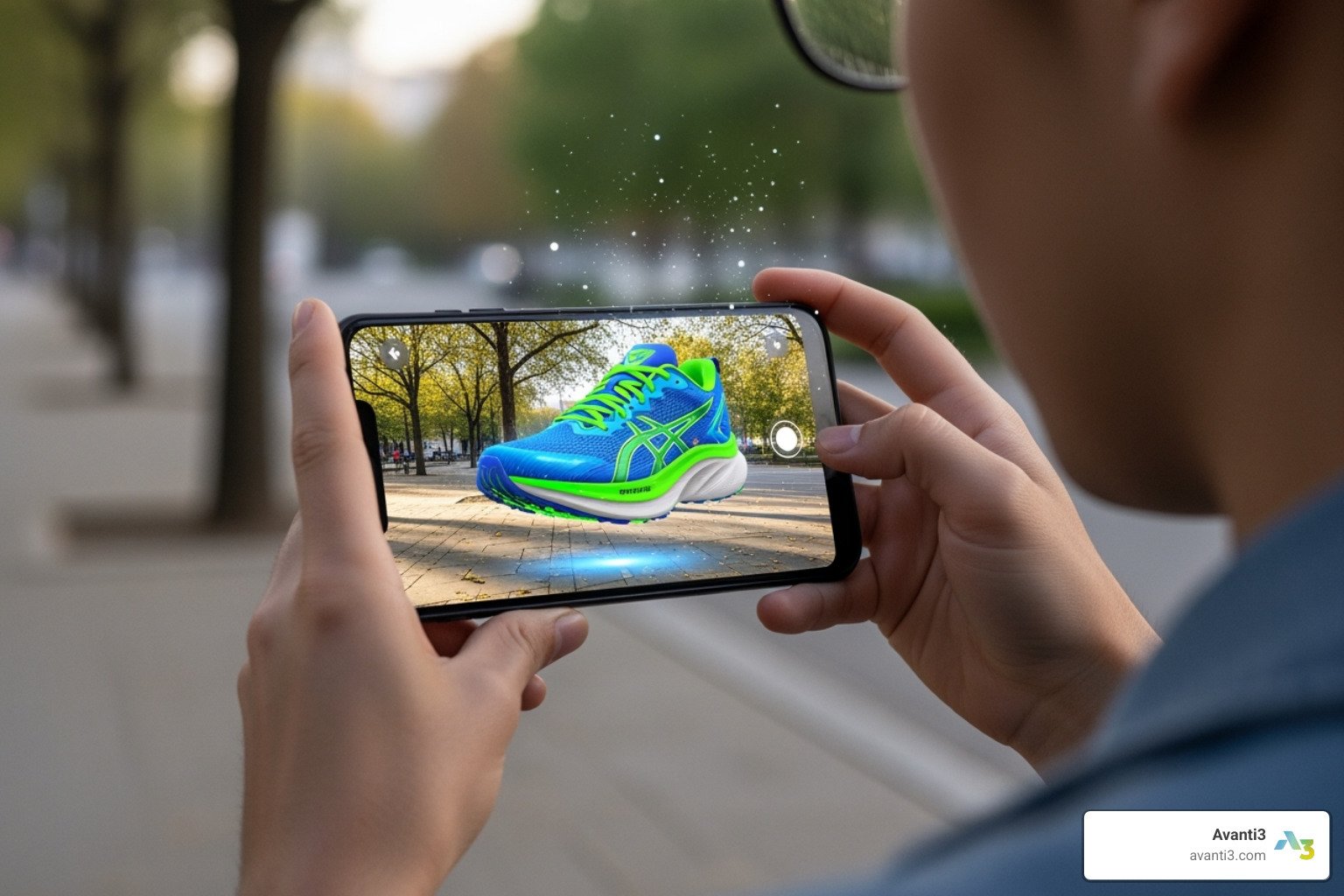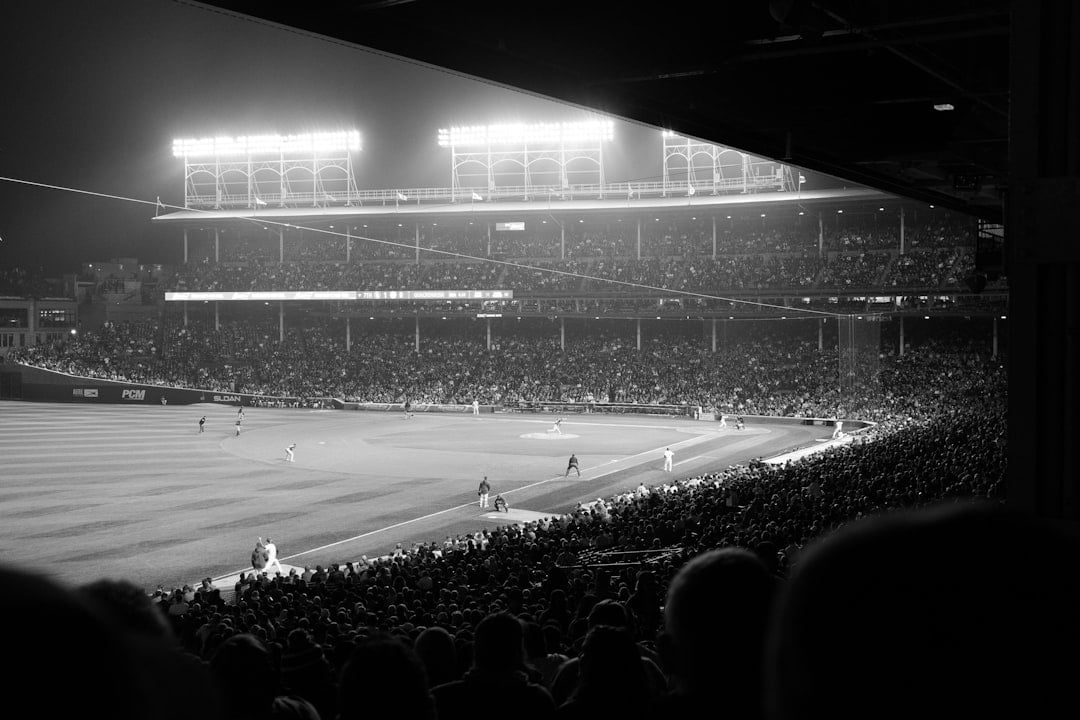AR Powered Brand Engagement: Magic in 2025!
Why Traditional Marketing Feels Like Yesterday’s News
AR powered brand engagement is changing how brands connect with their audiences, moving beyond static ads to create immersive experiences that capture attention. With consumers experiencing ad fatigue at unprecedented rates, brands need innovative approaches that cut through the digital noise.
AR-powered brand engagement offers:
- Interactive product visualization that lets customers try products virtually.
- Immersive storytelling that transforms brand narratives into participatory experiences.
- Higher conversion rates, with an 80% higher purchase likelihood after AR interactions.
- Reduced returns by up to 28% through virtual try-ons.
- Extended engagement, keeping users captivated 70% longer than traditional media.
- Social amplification, as AR content is 40% more likely to be shared.
The numbers tell a compelling story: the AR market is projected to reach $88.4 billion by 2026, and 61% of consumers prefer brands that offer AR experiences. This isn’t just about technology—it’s about meeting consumer expectations for interactive, personalized engagement. Today’s audiences want to experience products and participate in brand stories, not just consume them passively.
I’m Samir ElKamouny AV, and I’ve spent years helping brands steer the intersection of technology and customer connections, particularly with AR powered brand engagement strategies that drive real business results. I’ve seen how augmented reality transforms ordinary brand interactions into magical moments that customers remember and share.
Ar powered brand engagement terms you need:
- ar apps development
- cloud based ar
- ar vr application development services

The New Reality: What is AR-Powered Brand Engagement?
Picture shopping for a new couch online. Instead of guessing from photos, you point your phone at your living room and—boom—the couch appears, perfectly placed. You can walk around it, see it from every angle, and even change the color. That’s the magic of AR powered brand engagement.
At its core, augmented reality overlays digital content onto our real world in real-time. For brands, it transforms the entire customer relationship. Traditional marketing is a one-way street where brands talk at us. AR powered brand engagement flips this script, turning marketing into an interactive conversation where customers don’t just see products—they experience them.
The numbers are incredible. A whopping 61% of consumers now prefer brands that offer AR experiences. The AR market is exploding toward $88.4 billion by 2026, growing at a staggering 35% each year. This isn’t just a trend—it’s the new standard for how brands connect with people. For a deeper dive into how this technology is reshaping marketing, check out our guide on Augmented Reality Marketing.
Why AR-powered brand engagement is no longer optional
Remember when having a website was cutting-edge? We’re at that same pivotal moment with AR. What once seemed futuristic is now a customer expectation. Today’s consumers hunt for experiences, and AR delivers memorable “wow” moments that stick.
The competitive landscape is shifting fast. Nearly 40% of retailers plan to adopt AR technologies, and those who don’t risk being left behind. When a competitor lets customers virtually try on sunglasses, static product photos suddenly look boring. AR experiences also keep users engaged 70% longer than traditional content, building deeper connections, stronger brand recall, and ultimately, more sales.
The technology driving the magic
The beautiful thing about AR is that it’s already in everyone’s pocket. With over 1.7 billion mobile AR devices worldwide, most customers have everything they need. No special equipment required.
- Mobile AR apps let customers point their phone’s camera at the world and see products come to life.
- WebAR is even more accessible, working directly in web browsers with no app downloads or friction.
- Social media filters on platforms like Instagram and Snapchat have made AR feel natural and fun, training users to expect interactive experiences.
Looking ahead, AR glasses and devices like the Apple Vision Pro represent the next frontier of spatial computing, turning any space into an interactive canvas. While still emerging, they show where AR powered brand engagement is headed: a seamless integration of our digital and physical worlds. The technology is becoming easier to use and more accessible every day, allowing brands of all sizes to create meaningful digital experiences. Understanding these tools is crucial for creating a compelling Digital Experience Design that resonates with customers.
From Passive Ads to Active Play: The Core Benefits of AR

Traditional advertising has become background noise. AR powered brand engagement changes that, turning forgettable ads into interactive journeys. Instead of passively scrolling, customers can step into immersive storytelling experiences, like walking through a virtual coffee plantation or watching a sneaker’s design features come to life.
The real magic is product visualization. Customers can place furniture in their living rooms, try on makeup from home, or see a new car in their driveway. These interactive experiences solve real problems and satisfy curiosity in ways traditional ads can’t. The results speak for themselves: customers are 80% more likely to purchase after interacting with a product via AR. In fact, AR can increase conversion rates by 90% while simultaneously reducing returns because customers know exactly what they’re getting.
“Try Before You Buy”: Revolutionizing Product Visualization
The anxiety of online shopping—Will it fit? Will it match?—is real. AR powered brand engagement eliminates these worries by bringing the showroom experience directly to customers.
- Furniture: IKEA’s Place app transformed furniture shopping by letting customers place true-to-scale 3D models in their own rooms, eliminating guesswork about size and style.
- Beauty: Sephora’s Virtual Artist turns a phone into a personal makeup studio, allowing users to experiment with new looks risk-free and feel confident in their purchases.
- Fashion: Nike’s virtual shoe try-on technology scans feet for a perfect size recommendation, while its customization platform saw a 30% sales increase for personalized products after adding AR visualization.
This level of interaction builds genuine purchase confidence. When customers can virtually test products, guesswork disappears. The statistics are powerful: merchants who add 3D content see a 94% conversion increase with 3D content. Seeing is believing, and believing leads to buying.
Boosting Customer Satisfaction and Loyalty
Here’s where AR powered brand engagement proves its long-term value. Happy customers become loyal advocates, and AR creates this happiness by solving one of e-commerce’s biggest headaches: product returns.
Reduced product returns mean massive savings. When someone can virtually try on clothes or place furniture, they make informed decisions. Nike Fit, for example, reduced returns by 28% with its accurate sizing technology. This saves money and turns potentially frustrated customers into satisfied ones.
The technology also provides an improved understanding of a product. Interactive tutorials can walk customers through complex features, or 3D models can let them explore every detail. This combination of confidence and understanding creates increased loyalty. When people have positive, memorable experiences, they remember how the brand made them feel. Studies show that 64% of consumers express increased loyalty toward brands offering AR experiences.
Retailers implementing AR report 30-40% improvements in customer satisfaction rates. These aren’t just numbers; they represent people who feel valued by brands that invest in their experience. For more insights on building these connections, explore our approach to Digital Brand Engagement.
Beyond the Gimmick: Strategies for Effective AR Implementation

Flashy technology won’t save a poor campaign. The magic of AR powered brand engagement happens when you move beyond the “wow factor” and focus on strategic implementation that drives results. Successful AR campaigns don’t need fireworks; they need to provide value by making customers’ lives easier, more fun, or more informed.
The best AR campaigns integrate seamlessly into your existing marketing ecosystem. It’s about cross-touchpoint integration, connecting your AR experience with your website, social media, and packaging. Smart content planning and intuitive user experience design are key to making every interaction feel rewarding, not gimmicky.
Changing Touchpoints: From Packaging to Social Media
Your product packaging can become a portal to another world. Interactive packaging transforms a simple container into a storytelling powerhouse.
- Modelo turned beer cans into triggers for an animated Dia de los Muertos celebration, resulting in a 16.5% sales increase.
- The Glenlivet used AR-enabled packaging for an interactive tasting experience with mini-games, turning unboxing into entertainment.
Social media AR filters have become a playground where brands and users co-create content. With Gen Z and Millennials 75% more likely to engage with AR monthly, custom filters turn users into brand ambassadors. This is powerful, as 40% of users are more likely to share AR experiences compared to other brand posts, generating organic reach.
Location-based experiences bring digital magic into physical spaces. Tilly’s AR scavenger hunt in its stores led to an 80% voucher redemption rate. The L.A. Dodgers used a WebAR face effect activated by QR codes in newspaper ads, achieving an 18% click-through rate. These are strategic tools that drive foot traffic and create shareable moments. We help brands explore these possibilities through our AR Marketing Solutions.
Personalization and Data: The Keys to Deeper Connection
Every AR interaction provides valuable data. When someone explores a product feature or uses a filter, they’re revealing their preferences. This data analysis allows you to understand customers on a deeper level.
Smart brands use these user behavior insights to create personalized experiences. This is crucial, as 91% of shoppers prefer brands that offer custom recommendations. AR makes this personalization visual and interactive. Instead of just suggesting a product, you can let customers virtually try it on, customized to their tastes.
The integration of AI-powered personalization takes this further. AI can analyze user interactions to predict what they might want next, suggest complementary products, or customize the AR experience in real-time. For brands looking to leverage data-driven personalization, our AI Digital Marketing services can help turn insights into compelling AR experiences.
Measuring the ROI of AR-powered brand engagement
Even the most magical AR experience needs to prove its worth. Fortunately, AR campaigns are highly measurable. Key metrics include:
- Engagement Rates: Coca-Cola’s FIFA AR experience generated over 1,000 interactions in two days, while Modelo’s AR mural kept users engaged for 2-3 minutes on average.
- Conversion Tracking: Modelo saw a 16.5% sales increase, and Tilly’s achieved an 80% voucher redemption rate.
- Social Shares: Users are 40% more likely to share AR experiences, amplifying your reach organically.
- Customer Satisfaction: Retailers using AR report 30-40% improvements in customer satisfaction rates.
- Brand Awareness: Data shows AR can increase brand awareness by 70%, boosting long-term value.
The Future is Now: How AR is Shaping the Next Wave of Marketing

We’re at a crossroads where AR powered brand engagement is about to become extraordinary. The future of marketing is already here, reshaping how brands connect with people. By 2026, one in four people will spend at least an hour daily in AR or the metaverse. This shift means brands must create experiences that live in these new digital spaces.
Metaverse integration is no longer a buzzword; it’s the playground where brands will build lasting relationships. We’re talking about persistent digital worlds where your brand can exist 24/7, offering experiences that blend with daily life. Imagine customers in virtual showrooms or owning exclusive digital collectibles through Augmented Reality NFTs.
The Convergence of AR, AI, and Web3
Things get really exciting when AR powered brand engagement meets artificial intelligence and Web3. This convergence creates smarter AR experiences that learn from each interaction. Picture an AR shopping assistant that remembers your style, suggests matching accessories, and learns from your browsing patterns to improve its recommendations. That’s AI-powered personalization and AR working together.
Blockchain for digital ownership adds another layer. When customers can truly own digital assets—like exclusive AR filters or virtual clothing—they develop a deeper connection to your brand. These NFTs in AR create new opportunities for loyalty, community building, and revenue. The shift toward decentralized brand experiences means customers become active participants and stakeholders. Our Digital Engagement Solutions are designed to help brands steer this new landscape.
What’s Next for AR-powered brand engagement
The next wave of innovations will make today’s AR look like early smartphone apps. Key trends to watch include:
- Hyper-realism: AR content is becoming so lifelike that the line between digital and physical will disappear, making “try before you buy” incredibly powerful.
- Collaborative AR spaces: Brands can host virtual events where customers worldwide interact with products and each other in real-time, building strong communities.
- Persistent AR worlds: Digital content anchored to real-world locations allows for ongoing, evolving experiences, like a permanent AR layer at a flagship store.
- The role of 5G: Faster speeds and lower latency are eliminating technical barriers, enabling smoother, richer, and more complex multi-user AR experiences.
- Mainstream adoption: As AR glasses become more comfortable and affordable, AR will be seamlessly integrated into daily life through hands-free interfaces.
This future is about creating deeper, more meaningful connections. From Augmented Reality Concerts to interactive product launches, the possibilities are limitless. The brands that experiment today will set the standards for tomorrow.
Frequently Asked Questions about AR Brand Engagement
You’ve probably got questions about how AR powered brand engagement works in practice. Here are the most common ones I hear from brands.
How does AR increase conversion rates?
AR boosts buyer confidence by eliminating the guesswork of online shopping. When a customer can virtually “try before they buy”—seeing how furniture looks in their room or how makeup looks on their face—it reduces purchase anxiety. This confidence translates directly into sales. Customers are 80% more likely to purchase after an AR interaction, and merchants report conversion rate increases of 90% or more.
What industries benefit most from AR?
While AR powered brand engagement is useful everywhere, some industries see transformative results. Retail, fashion, beauty, and furniture lead the way by solving obvious customer pain points. Automotive brands are creating virtual showrooms, and real estate offers virtual home tours. But AR is also spreading to education for immersive learning, healthcare for training simulations, and tourism for interactive guides. Any industry that benefits from showing rather than telling can harness AR’s power.
Is AR technology expensive for businesses to implement?
This has changed dramatically. While custom app development can be a significant investment, the landscape has evolved. WebAR runs directly in browsers, eliminating the need for app downloads and lowering the barrier to entry. Additionally, no-code and low-code AR platforms allow brands to create compelling content without a team of developers. You can start small with a social media filter or QR-activated packaging, measure the results, and scale up based on what works for your business.
Conclusion
We’ve seen how AR powered brand engagement is revolutionizing marketing, shifting from passive advertisements to interactive experiences that create genuine magic. This move from viewing to participation is the new reality. When customers can virtually try products or open up stories through packaging, they aren’t just seeing your brand—they’re experiencing it, forging memorable connections that build loyalty.
AR has proven its worth with impressive results: conversion rates jumping by 90%, returns dropping by 28%, and customer satisfaction soaring. But beyond the stats is the ability to create “wow” moments that people share.
The technology is no longer futuristic; it’s in everyone’s pocket. With the market racing toward $88.4 billion by 2026, smart brands are already building deeper relationships through immersive, personalized experiences that blur the line between digital and physical.
At Avanti3, we integrate cutting-edge Web3 technologies like NFTs, blockchain, AR/VR, and AI to empower creators and brands. Our mission is to create unique digital experiences, rewards systems, and community-building opportunities that set new standards in digital engagement and fan monetization.
The future of marketing is here. To create compelling digital interactions, brands must explore the full potential of AR/VR Immersive Experiences. The question isn’t whether AR will reshape brand engagement—it already has. The real question is: will your brand be part of creating the magical moments that turn customers into devoted fans?






